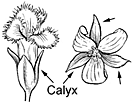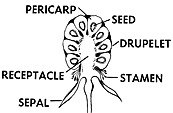Kopiko
Psychotria hawaiiensis
Madder family (Rubiaceae)
Native species ()
The Psychotria (including Straussia) is represented in Hawaii by about 11 species of shrubs and small trees distributed in wet forests through the islands. They have paired elliptical leaves with paired elliptical broad blunt erect long-stalked branched flower clusters with many small white flowers, and many small rounded orange This species is distinguished by short reddish brown hairs on leaf-stalks, lower leaf surface, and flower clusters.

©2012 Eric White
Leaves with large paired light green hairless or about 3⁄8–5⁄8 inch (10–15 ) long, rounded at falling early and leaving ring scar, and with long stout light green leaf-stalks 3⁄4–1 1⁄2 inches (2–4 ) long. Blades elliptical or 4–7 inches (10-18 ) long and 2–3 1⁄2 inches (4–9 ) wide, widest beyond middle, slightly thickened or leathery, blunt or rounded at short-pointed at base, with edges straight, upper surface slightly shiny green and hairless, with and many curved side veins light yellow, lower surface slightly shiny light green with scattered pressed rusty brown hairs especially on the raised veins.
Flower clusters () erect, 3–6 inches (7.5–15 ) long, branches with rusty brown hairs. Flowers many, stalked or nearly stalkless, 1⁄4 inch (6 ) long, composed of green hairy cup () with forming wavy border; white with short tube and 4–6 spreading longer than tube; 4–6 short in notches of and with inferior two-celled short and two stigmas.
() elliptical, 1⁄4–5⁄16 inch (6–8 ) long, with at two-seeded.
The hard whitish wood of this and related species was used by the Hawaiians as the anvil or kua kukukapa for beating bark into tapa or bark cloth, and also for fuel.
Scattered in the understory of moist to dry forests to about 500–5000 ft (152–1524 ) elevation.
Special areas
Volcanoes, Kipuka Puaulu
Champion
Height 45 ft (13.7 ), c.b.h. 4.9 ft (1. 5 ), spread 30 ft (9.1 ). Hoomau Ranch, Honomolino, Hawaii (1968).
Range
Hawaii, Molokai, and Maui
Other common names
opiko, kōpiko ‘ula
Botanical
Straussia hawaiiensis Gray
The Hawaiian small Straussia with about eight species has been united with the large widespread tropical Psychotria, which has about 1500 species.











